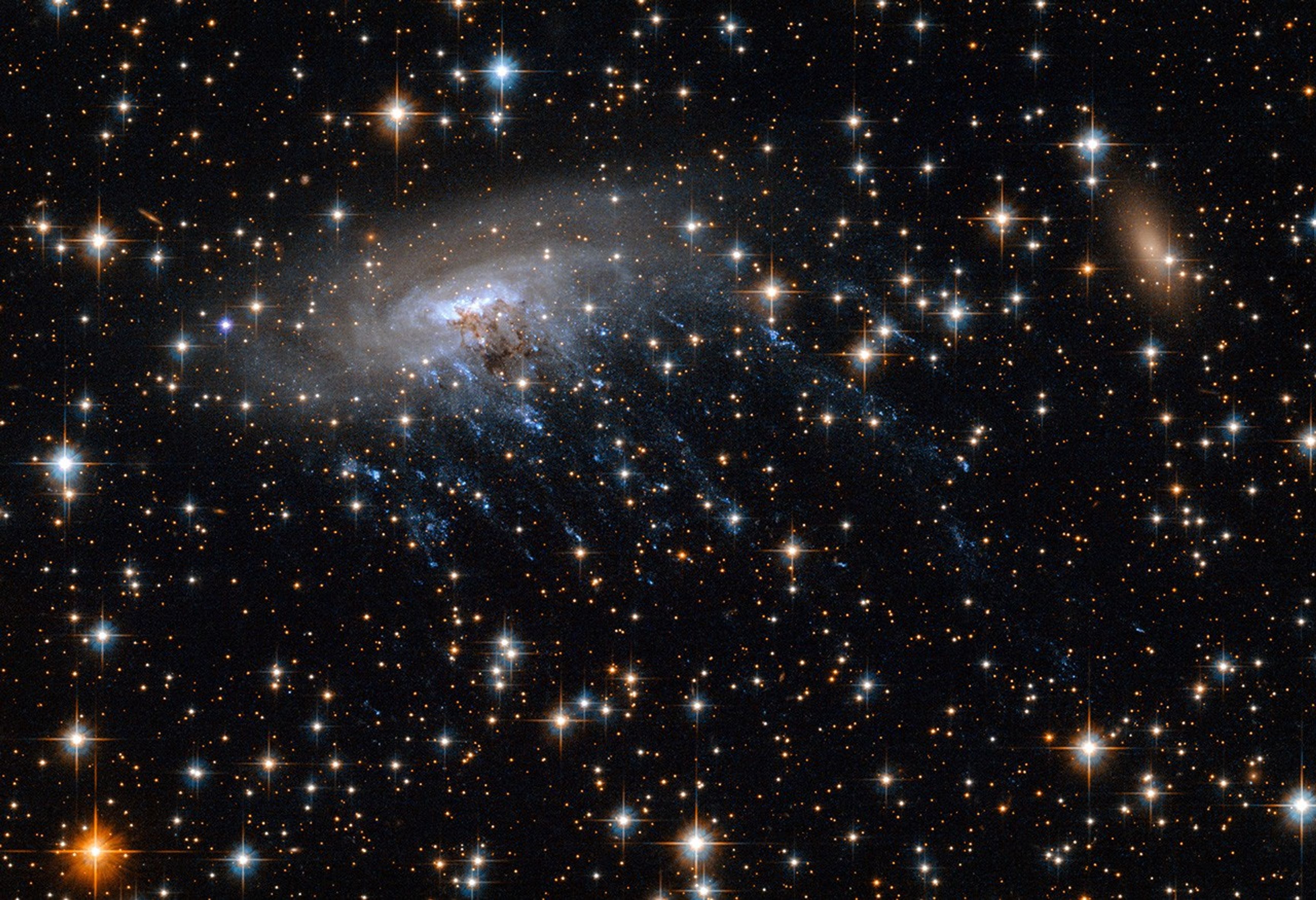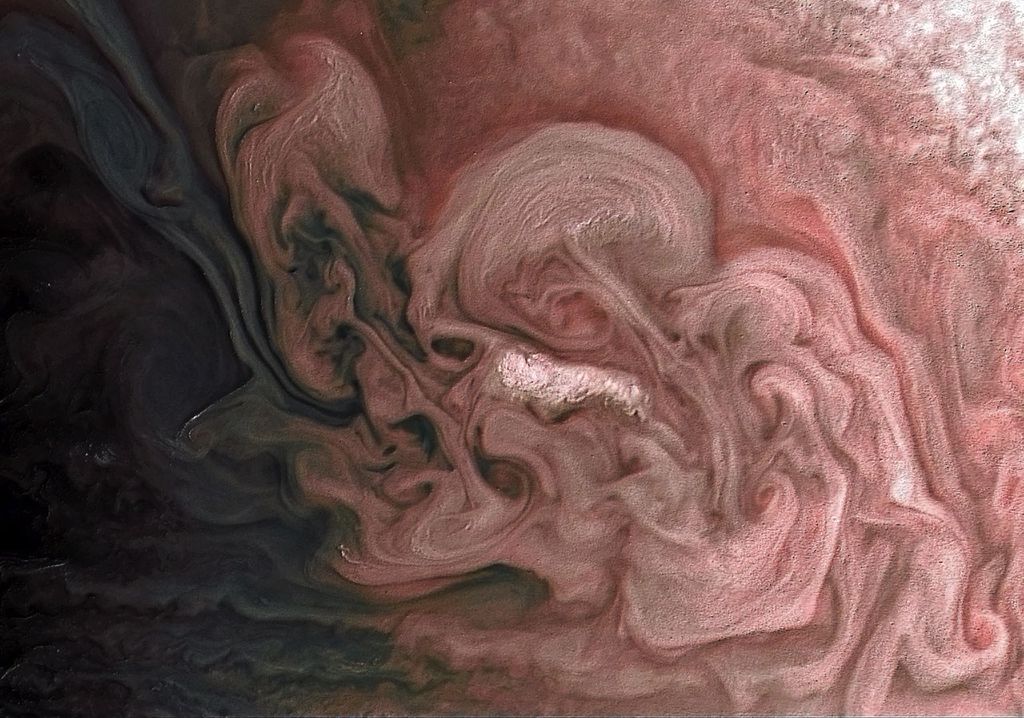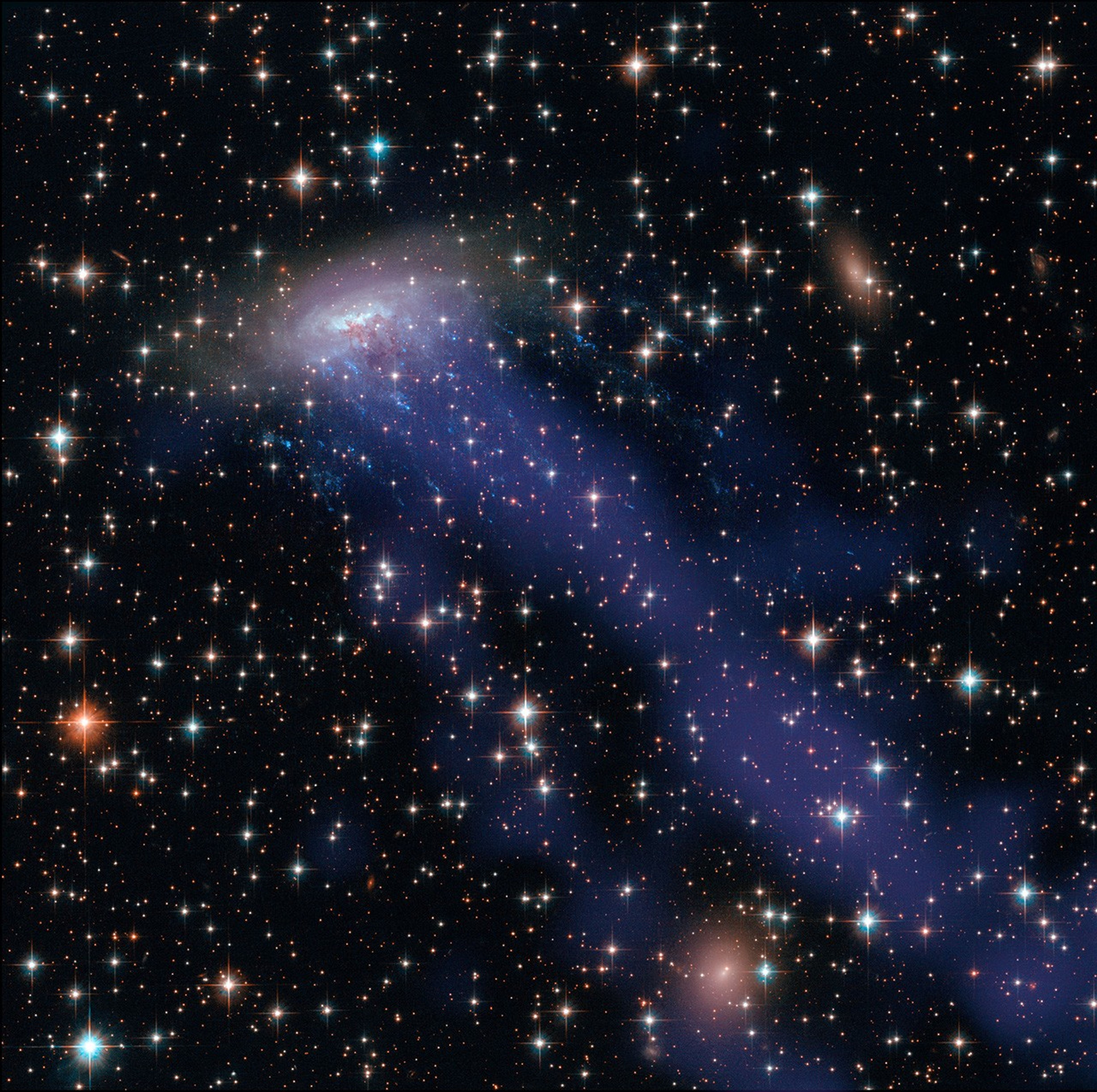1 min read
Galaxy ESO 137-001: Visible (Hubble)

The spiral galaxy ESO 137-001, seen here in an image from Hubble, is an example of a “jellyfish” galaxy, because blue tendrils of star formation stream away from it like jellyfish tentacles.
About the Object
- R.A. PositionR.A. PositionRight ascension – analogous to longitude – is one component of an object's position.16 13 24.20
- Dec. PositionDec. PositionDeclination – analogous to latitude – is one component of an object's position.-60° 45' 29.03"
- ConstellationConstellationOne of 88 recognized regions of the celestial sphere in which the object appears.Triangulum Australe
- DistanceDistanceThe physical distance from Earth to the astronomical object. Distances within our solar system are usually measured in Astronomical Units (AU). Distances between stars are usually measured in light-years. Interstellar distances can also be measured in parsecs.220 million light-years
- Object NameObject NameA name or catalog number that astronomers use to identify an astronomical object.ESO 137-001
- Object DescriptionObject DescriptionThe type of astronomical object.Spiral galaxy
- Release DateApril 17, 2019
- Science ReleaseA “Jellyfish” Galaxy Swims Into View of NASA’s Upcoming Webb Telescope
- CreditImage: NASA, ESA
Related Images & Videos
Share
Details
Last Updated
Aug 28, 2025
Contact
Media
Laura Betz
NASA’s Goddard Space Flight Center
Greenbelt, Maryland
laura.e.betz@nasa.gov
Image Credit
NASA, ESA
































